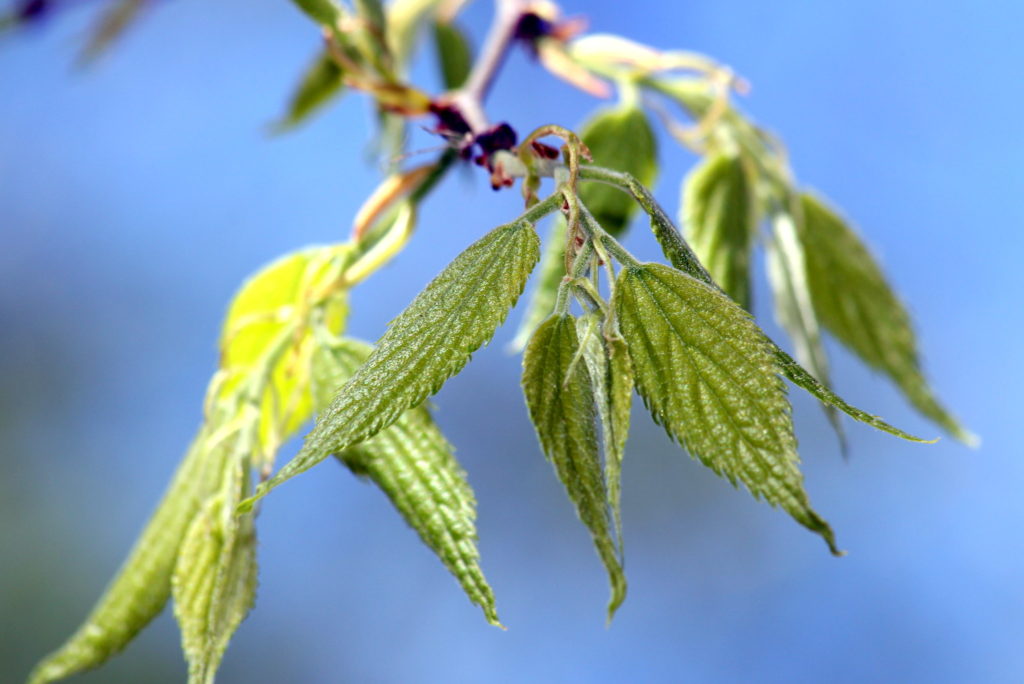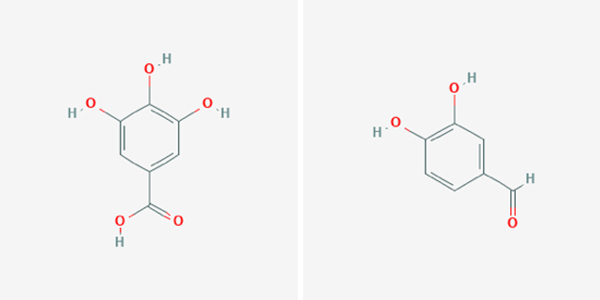- About Us
- Our Work
- Tree Info
- Get Involved
- Blog
- Support Us
By Canopy Team on March 16, 2020

Photo courtesy Manuel M. V. via Flickr
Tree Spotlight Series: Follow along as we learn about the fascinating trees that live among us. This series is in partnership with Rhee Lab in the Plant Biology Department of the Carnegie Institution for Science.
Other posts in the series: ginkgo biloba, Douglas fir, giant sequoia, Chinese tallow, silver-dollar gum, Monterey pine, green dracaena, coast live oak, cork oak, Japanese maple, silver birch, dawn redwood, Japanese persimmon ‘Hachiya’, carob, California bay, avocado, southern magnolia, flowering dogwood, red ironbark eucalyptus, blackwood acacia, narrow leaved paperbark, cockspur coral, Chinese pistache, California pepper tree, toyon, Italian cypress, and strawberry tree.
When passing by a European hackberry (Celtis australis) tree in a park, on the highway, or in a front yard, rarely anyone gives the tree a second glance. The tree’s small, pointy green leaves and grayish-brown trunk are not its distinguishing points. To the trained eye, however, the European hackberry can be quickly spotted.
Dark purple, spherical berries hang from curving twigs that attract birds and squirrels to its branches. In parks, people often choose to rest under the tree’s shade provided by a thick crown of leaves. What the tree lacks in brilliantly colored flowers and leaves or strange peeling bark, it makes up for with its nutritious berries and resilience to pollution.
In autumn, wildlife and people flock to the European hackberry tree to feast on the tree’s berries. Approximately 9-12mm long, the berries are black or purple in color when ripe and have a single white seed. While the berries may seem dangerous to eat, they are a favorite of small animals in the wild. Known as hackberries, the fruit have a slightly sweet and aromatic flavor.
Many have reported the hackberry to have a taste similar to dates. Some people even incorporate the hackberries into salads, jam, and liquor to produce alcoholic fruit beverages. What’s more, the hackberries are known to have high nutritional value and are a great source of fiber. The fiber content in the hackberry is comparable to the fiber and protein levels of a fig.
In addition, the fruit and leaves are reported to help with digestive and menstrual issues. The fruits and leaves contain gallic acid which has antidiarrheal properties. Another interesting compound the tree makes is 3,4-dihydroxybenzaldehyde which helps prevent blood clotting. Therefore, ingesting a decoction of the leaves or the fruit has been reported to help those affected by diarrhea, amenorrhoea, colic, and other irregular menstrual cycle problems.

With the European hackberry’s particular physiological and chemical makeup, the tree is prepared for the Earth’s heavily polluted future. Pollution threatens the Earth’s condition as our carbon and heavy metal emissions increase every year. According to a study by Azim Ozturk, a biology professor of Marmara University in Istanbul, Turkey, there is an increasing amount of heavy metal pollution in the air, soil, and water.
One piece of evidence lies in the poor condition of certain tree species grown in suburban and urban settings. Lead, cadmium, and copper are among the few metals found in excess in trees and the soil. Ozturk points out that “even in very small amounts, in the air, soil and water, [the heavy metals] can be harmful to many organisms” (Ozturk).
However, the European hackberry showed no signs of significant damage even after absorbing significant amounts of the heavy metals. With this, the European hackberry remains a popular tree to plant in suburban and urban settings because of its resistance to pollution. While there is no further research published on the pollution resistant qualities of the European hackberry tree, it could be a valuable asset to study. Hopefully, researching this quality could help other trees and their survival in our increasingly polluted world.
Check out a local European hackberry on Canopy’s Downtown North Tree Walk!
Suhyun (Suzie) Lee was a 2019 summer intern at the Rhee Lab in the Plant Biology Department of the Carnegie Institution for Science. She is a first year student at Cal Poly University studying biology. Molecular biology has always piqued her interest and in the future, she hopes to pursue research regarding the defense mechanisms of organisms and phenotypic plasticity within plants or animals. In her free time she loves to paint, hike, and garden.